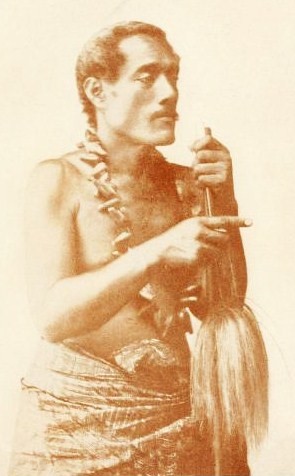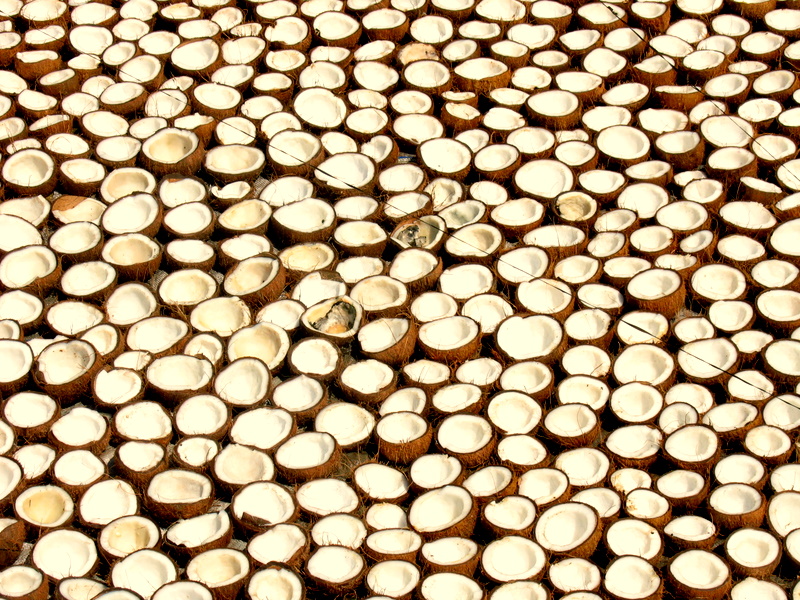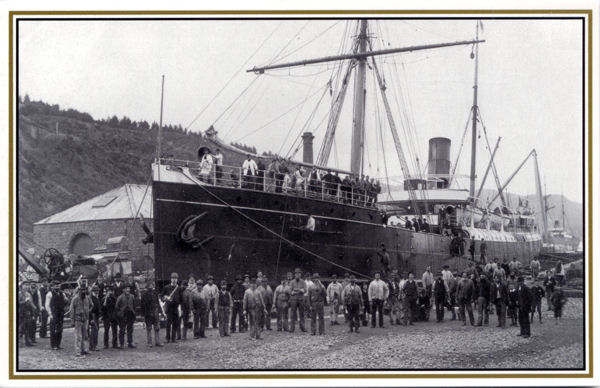|
Mau Movement
The Mau was a nonviolence, non-violent movement for Samoan independence from colony, colonial rule during the first half of the 20th century. ''Mau'' means 'resolute' or 'resolved' in the sense of 'opinion', 'unwavering', 'to be decided', or 'testimony'; also denoting 'firm strength' in Samoan language, Samoan. The motto for the Mau were the words Samoa mo Samoa (Samoa for the Samoans). Similarly in Hawaiian ''Mau'' means to strive or persevere, and is often linked with Hawaiian poetry relating to independence and sovereignty struggles. The movement had its beginnings on the island of Savai'i with the ''Mau a Pule'' resistance in the early 1900s with widespread support throughout the country by the late 1920s. As the movement grew, leadership came under the country's chiefly elite, the customary ''Fa'amatai, matai'' leaders entrenched in Samoan tradition and fa'a Samoa. The Mau included women who supported the national organisation through leadership and organisation as well ... [...More Info...] [...Related Items...] OR: [Wikipedia] [Google] [Baidu] |
Nonviolence
Nonviolence is the personal practice of not causing harm to others under any condition. It may come from the belief that hurting people, animals and/or the environment is unnecessary to achieve an outcome and it may refer to a general philosophy of abstention from violence. It may be based on moral, Religion, religious or spiritual principles, or the reasons for it may be strategy, strategic or pragmatic ethics, pragmatic. Failure to distinguish between the two types of nonviolent approaches can lead to distortion in the concept's meaning and effectiveness, which can subsequently result in confusion among the audience. Although both principled and pragmatic nonviolent approaches preach for nonviolence, they may have distinct motives, goals, philosophies, and techniques. However, rather than debating the best practice between the two approaches, both can indicate alternative paths for those who do not want to use violence. Nonviolence has "active" or "activist" elements, in that ... [...More Info...] [...Related Items...] OR: [Wikipedia] [Google] [Baidu] |
Copra
Copra (from ; ; ; ) is the dried, white flesh of the coconut from which coconut oil is extracted. Traditionally, the coconuts are sun-dried, especially for export, before the oil, also known as copra oil, is pressed out. The oil extracted from copra is rich in lauric acid, making it an important commodity in the preparation of lauryl alcohol, soaps, fatty acids, cosmetics, etc. and thus a lucrative product for many coconut-producing countries. The palatable oil cake, known as copra cake, obtained as a residue in the production of copra oil is used in animal feeds. The ground cake is known as coconut or copra meal. Production Copra has traditionally been grated and ground, then boiled in water to extract coconut oil. It was used by Pacific island cultures and became a valuable commercial product for merchants in the South Seas and South Asia in the 1860s. Nowadays, coconut oil (70%) is extracted by crushing copra; the by-product is known as copra cake or copra meal (30 ... [...More Info...] [...Related Items...] OR: [Wikipedia] [Google] [Baidu] |
Falefa
Falefā is located on the north eastern coast of Upolu island in Samoa. It was the ancient capital during the ('government') of (King) Fonoti after defeating his kin Vaafusuaga Toleafoa and Samalaulu for control of Samoa. King Fonoti chose to rule from his new seat in Falefa, an honour remembered in its ''faalupega'' (Charter and Salutations) to this day. Falefa is headed by the descendants of its two founders - Moeono Falealoga (''tulafale-alii or 'matua'') and Leutele Leutogatui (''matua-alii''), the sons of Tui Atua Lemuaiteleloloa and his wife, Leateafaiga. It is situated in the Anoamaa 1 electoral constituency which itself is situated within the larger ancient political 'district' of Anoamaa, a province of Atua. Atua is headed by the Tui Atua (sovereign of Atua), a title once held by the seer Tui Ātua Leutele (called Tui Atua Leuteleleiite) in the 10th century, during Samoa's period of antiquity. Since the 17th century, this mantle has been occupied mainly by one of t ... [...More Info...] [...Related Items...] OR: [Wikipedia] [Google] [Baidu] |
Colonialism
Colonialism is the control of another territory, natural resources and people by a foreign group. Colonizers control the political and tribal power of the colonised territory. While frequently an Imperialism, imperialist project, colonialism can also take the form of settler colonialism, whereby settlers from one or multiple colonizing metropoles occupy a territory with the intention of partially or completely supplanting the existing population. Colonialism developed as a concept describing European colonial empires of the modern era, which spread globally from the 15th century to the mid-20th century, spanning 35% of Earth's land by 1800 and peaking at 84% by the beginning of World War I. European colonialism employed mercantilism and Chartered company, chartered companies, and established Coloniality of power, coloniality, which keeps the colonized socio-economically Other (philosophy), othered and Subaltern (postcolonialism), subaltern through modern biopolitics of Heterono ... [...More Info...] [...Related Items...] OR: [Wikipedia] [Google] [Baidu] |
Anti-Americanism
Anti-Americanism (also called anti-American sentiment and Americanophobia) is a term that can describe several sentiments and positions including opposition to, fear of, distrust of, prejudice against or hatred toward the United States, its Federal government of the United States, government, its Foreign policy of the United States, foreign policy, or Americans in general. Anti-Americanism can be contrasted with pro-Americanism, which refers to support, love, or admiration for the United States. Political scientist Brendon O'Connor at the United States Studies Centre in Australia suggests that "anti-Americanism" cannot be isolated as a consistent phenomenon, since the term originated as a rough composite of stereotypes, prejudices, and criticisms which evolved into more politically-based criticisms. French scholar Marie-France Toinet says that use of the term "anti ... [...More Info...] [...Related Items...] OR: [Wikipedia] [Google] [Baidu] |
Scottish People
Scottish people or Scots (; ) are an ethnic group and nation native to Scotland. Historically, they emerged in the Scotland in the Early Middle Ages, early Middle Ages from an amalgamation of two Celtic peoples, the Picts and Gaels, who founded the Kingdom of Scotland (or ''Kingdom of Alba, Alba'') in the 9th century. In the following two centuries, Celtic-speaking Hen Ogledd, Cumbrians of Kingdom of Strathclyde, Strathclyde and Germanic-speaking Anglo-Saxons, Angles of Northumbria became part of Scotland. In the Scotland in the High Middle Ages, High Middle Ages, during the 12th-century Davidian Revolution, small numbers of Normans, Norman nobles migrated to the Lowlands. In the 13th century, the Norse-Gaels of the Kingdom of the Isles, Western Isles became part of Scotland, followed by the Norsemen, Norse of the Northern Isles in the 15th century. In modern usage, "Scottish people" or "Scots" refers to anyone whose linguistic, cultural, family ancestral or genetic origin ... [...More Info...] [...Related Items...] OR: [Wikipedia] [Google] [Baidu] |
Robert Logan (politician)
Robert Logan (2 April 1863 – 4 February 1935) was an officer in the New Zealand Military Forces who served in the First World War as the Military Administrator of Samoa. Born in 1863 in Scotland, Logan migrated to New Zealand in 1881 and took up farming. Also involved in the militia, he became a professional soldier in 1912 when he joined the New Zealand Military Forces. He was commanding the Auckland Military District at the time of the outbreak of the First World War and was appointed the commander of the Samoa Expeditionary Force, dispatched from New Zealand to occupy the island of Samoa, a territory of the German Empire at the time. Samoa was easily occupied on 29 August 1914 and Logan became its Military Administrator; he remained in this capacity for the duration of the war. Although he was decorated for his services, his administration of Samoa was later criticised, particularly in relation to the handling of the influenza outbreak of November 1918, which led to ... [...More Info...] [...Related Items...] OR: [Wikipedia] [Google] [Baidu] |
SS Talune
''SS Talune'' was built in 1890 and scuttled in 1925. She was a passenger and freight steamship employed in the Tasman Sea and South Seas trades in the last decade of the 19th century and the first two decades of the 20th century. It was a typical ship of its time and type in every way. It would be unknown except that it was the ship that brought the deadly 1918 Spanish flu pandemic from New Zealand to Samoa and other Pacific islands. History SS (steamship) ''Talune'' was built by Ramage & Ferguson, of Leith, Scotland, for the Tasmanian Steam Navigation Company of Hobart, Tasmania, entering service with the company in 1890. It was of 2,087 tons, about 230 feet long, coal fired, and powered by a triple-expansion steam engine. It had passenger accommodation for up to 175 people and a crew of around 56. Initially the Talune was employed on the Hobart-Sydney run for its parent company. In 1891, the ship was taken over by the Union Steam Ship Company of New Zealand when it abs ... [...More Info...] [...Related Items...] OR: [Wikipedia] [Google] [Baidu] |
Influenza
Influenza, commonly known as the flu, is an infectious disease caused by influenza viruses. Symptoms range from mild to severe and often include fever, runny nose, sore throat, muscle pain, headache, coughing, and fatigue. These symptoms begin one to four (typically two) days after exposure to the virus and last for about two to eight days. Diarrhea and vomiting can occur, particularly in children. Influenza may progress to pneumonia from the virus or a subsequent bacterial infection. Other complications include acute respiratory distress syndrome, meningitis, encephalitis, and worsening of pre-existing health problems such as asthma and cardiovascular disease. There are four types of influenza virus: types A, B, C, and D. Aquatic birds are the primary source of influenza A virus (IAV), which is also widespread in various mammals, including humans and pigs. Influenza B virus (IBV) and influenza C virus (ICV) primarily infect humans, and influenza D virus (IDV) i ... [...More Info...] [...Related Items...] OR: [Wikipedia] [Google] [Baidu] |
Talune
''SS Talune'' was built in 1890 and scuttled in 1925. She was a passenger and freight steamship employed in the Tasman Sea and South Seas trades in the last decade of the 19th century and the first two decades of the 20th century. It was a typical ship of its time and type in every way. It would be unknown except that it was the ship that brought the deadly 1918 Spanish flu pandemic from New Zealand to Samoa and other Pacific islands. History SS (steamship) ''Talune'' was built by Ramage & Ferguson, of Leith, Scotland, for the Tasmanian Steam Navigation Company of Hobart, Tasmania, entering service with the company in 1890. It was of 2,087 tons, about 230 feet long, coal fired, and powered by a triple-expansion steam engine. It had passenger accommodation for up to 175 people and a crew of around 56. Initially the Talune was employed on the Hobart-Sydney run for its parent company. In 1891, the ship was taken over by the Union Steam Ship Company of New Zealand when it abs ... [...More Info...] [...Related Items...] OR: [Wikipedia] [Google] [Baidu] |
World War I
World War I or the First World War (28 July 1914 – 11 November 1918), also known as the Great War, was a World war, global conflict between two coalitions: the Allies of World War I, Allies (or Entente) and the Central Powers. Fighting took place mainly in European theatre of World War I, Europe and the Middle Eastern theatre of World War I, Middle East, as well as in parts of African theatre of World War I, Africa and the Asian and Pacific theatre of World War I, Asia-Pacific, and in Europe was characterised by trench warfare; the widespread use of Artillery of World War I, artillery, machine guns, and Chemical weapons in World War I, chemical weapons (gas); and the introductions of Tanks in World War I, tanks and Aviation in World War I, aircraft. World War I was one of the List of wars by death toll, deadliest conflicts in history, resulting in an estimated World War I casualties, 10 million military dead and more than 20 million wounded, plus some 10 million civilian de ... [...More Info...] [...Related Items...] OR: [Wikipedia] [Google] [Baidu] |
Marianas
The Mariana Islands ( ; ), also simply the Marianas, are a crescent-shaped archipelago comprising the summits of fifteen longitudinally oriented, mostly Volcano#Dormant and reactivated, dormant volcanic mountains in the northwestern Pacific Ocean, between the 12th parallel north, 12th and 21st parallel north, 21st parallels north and along the 145th meridian east. They lie south-southeast of Japan, west-southwest of Hawaii, north of New Guinea, and east of the Philippines, demarcating the Philippine Sea's eastern limit. They are found in the northern part of the western Oceania, Oceanic sub-region of Micronesia, and are politically divided into two jurisdictions of the United States: the Commonwealth of the Northern Mariana Islands and, at the southern end of the chain, the territory of Guam. The islands were named after the influential Spanish queen Mariana of Austria following their colonization in the 17th century. The indigenous inhabitants are the Chamorro people. Archaeologi ... [...More Info...] [...Related Items...] OR: [Wikipedia] [Google] [Baidu] |








